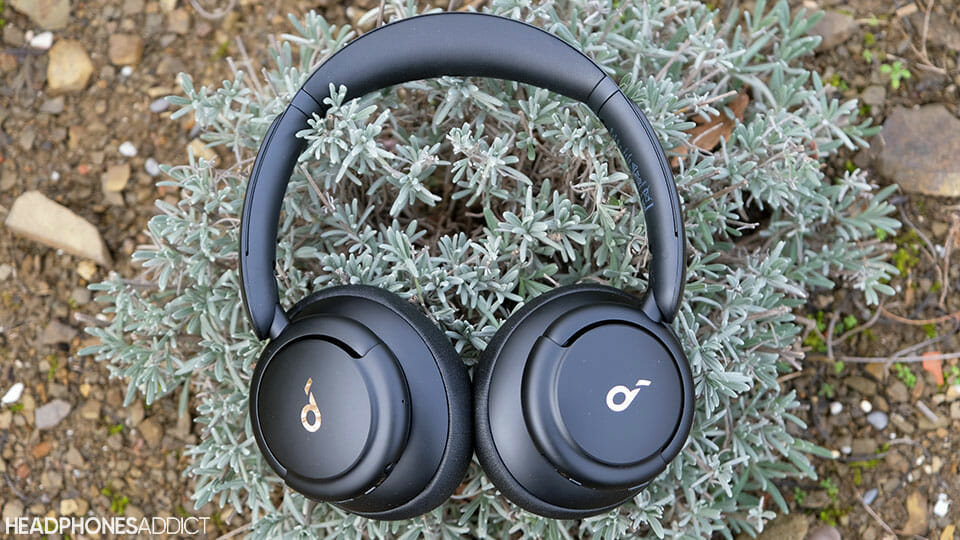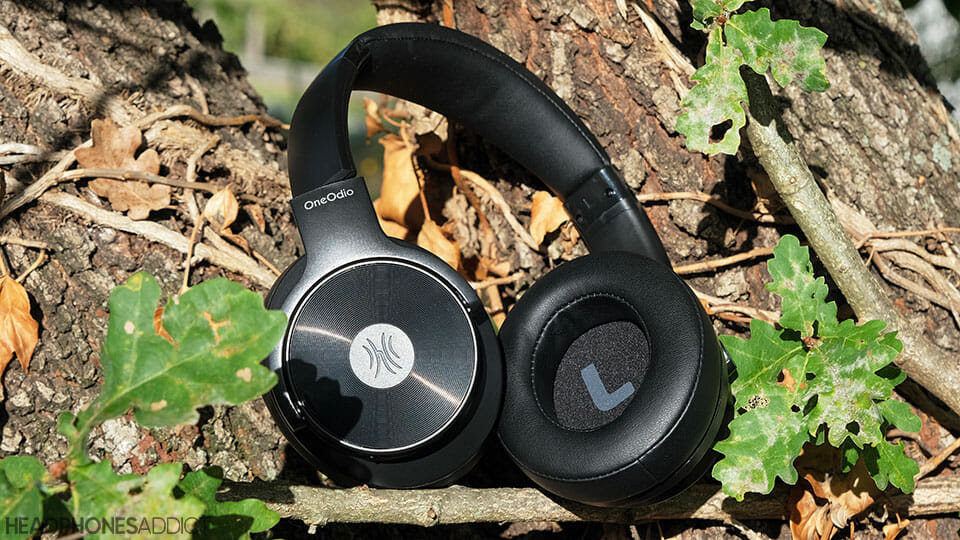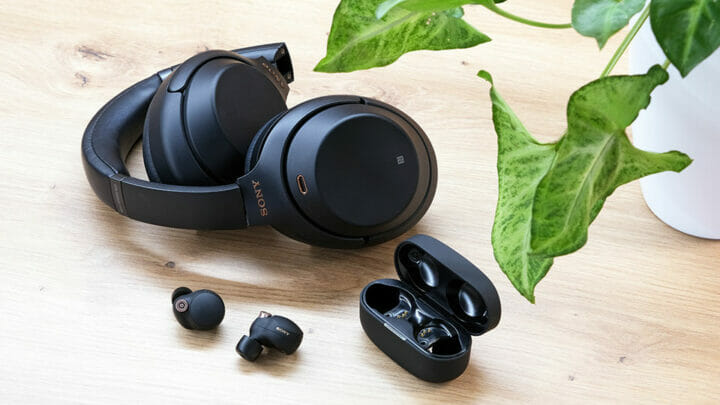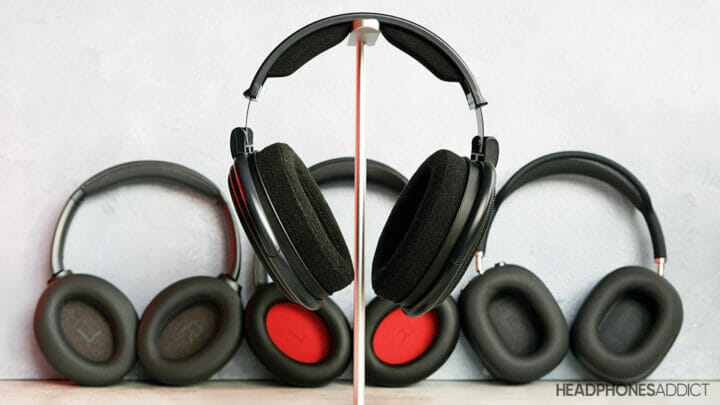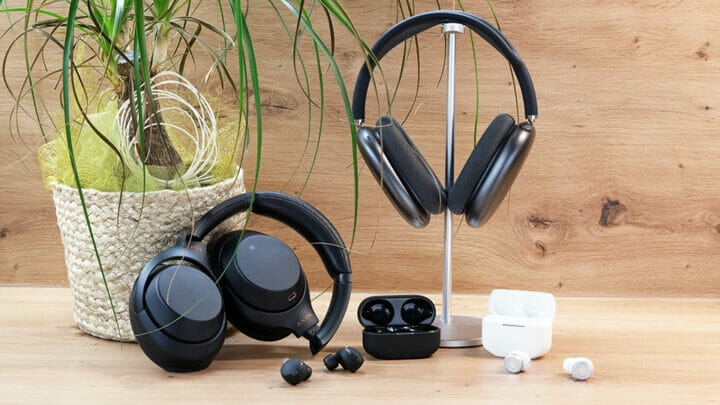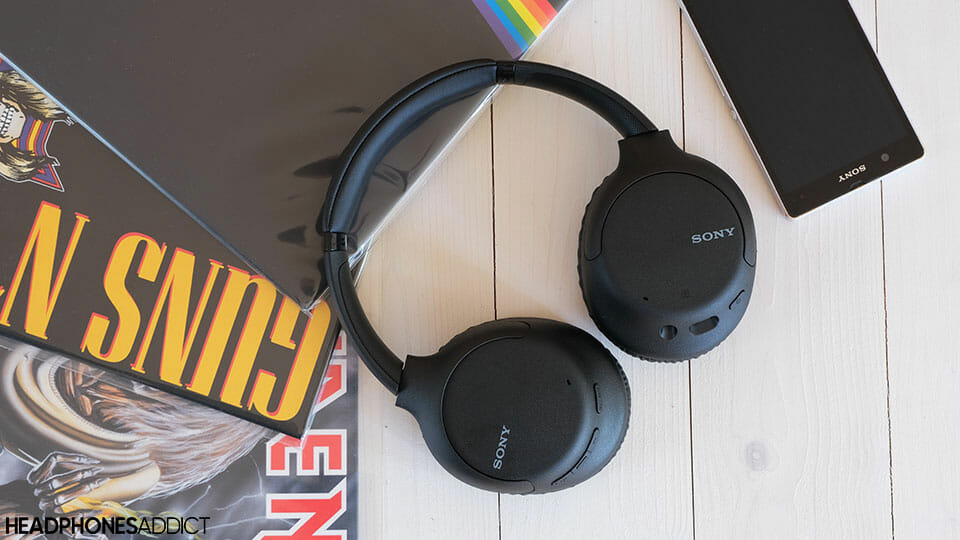
Sony WH-CH710N represent a middle ground between budget and premium. While they offer many features, half work great, and the rest are somewhat mixed.
Starting with positives, the Sony WH-CH710N battery lasts for around 35 hours on a full charge (more than the competition).
Furthermore, Sony WH-CH710N offer pretty good active noise cancellation and are made with excellent comfort in mind.
On the other hand, the sound quality could be better. More on that below (see the A/B sound test).
We’ll also cover if they’re worth the price and what characteristics make them better than the competition.
Find out in our unbiased review.
- Excellent comfort
- Lightweight design
- Effective active noise cancellation
- Great battery life (43 hours per charge)
- Mediocre sound quality
- Overpriced
Note: We bought the Sony WH-CH710N headphones ourselves to ensure objectivity. It’s an online-bought model, so you can expect similar experience.
Sound

Headphones are recessed throughout the midrange and treble, leaving you with an understated, albeit smooth, listening experience.
Hear the Sony WH-CH710N A/B Sound Test
Learn how to understand sound comparisons.
Upon first hearing the Sony WH-CH710N, I was a bit underwhelmed by the audio performance.
While their smooth sound signature is easy to listen to for extended periods, the audio output is muddy and lacks detail.
Bass
The bass offers good extension and a mild boost. Far less than what you see with Sony’s Extra Bass series of headphones. It adds a pleasant warmth to the sound, which compliments the overall smooth tonality.
Unfortunately, lower frequencies aren’t the most detailed. While the punch is there when listening to more fast-paced songs, instruments like bass guitars simply lack control.
Thankfully, since the transition from bass to midrange is pretty neutral, the one doesn’t bleed into the other.
Midrange
Mids are recessed, warm, and very smooth. Vocals sound pretty natural, albeit a bit quiet. At least you don’t have to worry about sibilance or harshness.
On the other hand, instruments like guitars sound somewhat hollow and out of tune.
Sony WH-CH710N Frequency Response

Treble
Higher frequencies are also smooth, and the dark tonality makes them easy to listen to. However, they heavily lack detail and air.
Cymbal crashes pack a decent texture but are so quiet they get easily lost in the mix.
Moving to the soundstage, it’s decently large with equal width and depth.
Imaging is quite good, as well. You will be able to hear where the sounds are coming from, which adds to the listening experience.
The conclusion:
Sony WH-CH710N sound warm, muddy, recessed, and lack detail. These honestly aren’t characteristics of headphones that cost $178.
Users with treble-sensitive ears might enjoy them. However, you can get a much better sound for much less. More on that under alternatives.
Comfort & Fit

Headphones are incredibly light and sufficiently padded for fantastic comfort. In contrast, their clamping force isn’t the strongest, so you might want to skip working out with these.
Sony WH-CH710N can look a bit funny with their big earcups and a thin headband.

Sony carefully trimmed the weight without sacrificing build quality. Plastic construction still feels solid in hand and without squeaky parts (although they do rattle a little).
That makes them very light for over-ear headphones. They weigh almost nothing, and you barely feel them on your head.
Headphones have a moderate clamping force, softened by big, over-ear earpads. They’re made of memory foam and faux leather.
Earpads aren’t very deep, so your ears still touch the inner mesh. However, that doesn’t result in pain, at least not immediately. You could easily wear them for a couple of hours straight.

The headband is padded but slightly. There’s barely any padding on it, but it’s sufficient not to cause pressure on top of your head.
Furthermore, the fit is about average. Clamping force will keep headphones on during regular activities and commuting.
However, there’s a big chance they’ll fly off your head during rapid movements. Here are a few tips on how to improve headphones’ fit.
Durability

Headphones are made of good-quality plastic and have an aluminum frame. However, they don’t look very drop resistant, and you sadly don’t get a carrying case.
Build quality is good for the price. While entirely plastic, headphones don’t feel cheap despite being very light.
For improved rigidity, the headband has an aluminum plate. It makes the headphones flexible so they can withstand some twisting.
Ear cups rotate up to 100° so you can lay them flat on your chest or table. However, they can’t fold to make themselves smaller.
While the plastic isn’t the cheapest, I would still advise you to take good care of Sony WH-CH710N. Don’t toss them around.

Unfortunately, Sony doesn’t provide a carrying case. Headphones also aren’t sweat-resistant if you want to use them for working out.
Overall, headphones appear reasonably sturdy for daily use, commuting, home, or office. On the other hand, you should avoid using them for working out.
Battery

Our battery test: 43 hours and 6 minutes of battery life on a single charge. Sony WH-CH710N headphones last for at least a couple of days. Plus, they support fast charging.
Sony WH-CH710N battery comparison

Nobody likes to charge their gadgets every day, so having a beefy battery is a huge bonus. Fortunately, these Sony headphones have it.
In our battery life test, we got 43 hours and 6 minutes on a single charge. And that’s with active noise cancelling turned on. There are very few headphones with a longer battery life.
Keeping active noise cancelling turned off extends the playtime even further. With normal usage, you can probably squeeze out an entire week of music listening.
To juice them up, headphones support fast charging via a USB type C port.
A mere 10-minute charge adds another hour to your battery life.
Features

Sony WH-CH710N come with active noise cancelling and ambient sound mode, reliable controls, and an AUX port. Sadly, no app or EQ presets.
The high price is somewhat justified by the features. You get an active noise cancellation performance on top of ambient sound noise. Both work pretty well.
As for the rest, headphones rely on physical buttons for commands. There are separate buttons:
- On the left ear cup, there are music playback controls and active noise cancelling toggle
- On the right ear cup, you’ll find a power ON/OFF switch.
The buttons are slightly on the mushy side but work reliably.

Furthermore, these wireless noise canceling headphones support wired mode and have a 3.5mm headphone cable included in the box.
Sadly, despite the price, you can’t connect Sony WH-CH710N to a companion app. Also, there are no built-in EQ presets to play with.
Microphone Quality
The call quality differs greatly based on the environment, but at least you’re always understandable.
Sony WH-CH710N microphone test
In a quiet room, headphones pick up your voice with good clarity and without those popping sounds that usually come with Sony headphones.
Making calls in louder places results in audible levels of background distortion. However, headphones’ noise reduction manage to keep your voice understandable.
As a result, Sony WH-CH710N are a good pick for making phone calls regardless of the situation.
Noise Isolation

Earpads block a decent chunk of background noise, enough to make your daily commute more bearable. However, users with glasses can hear slight scratchy noises during usage.
Over-the-ear headphones are pretty good with passive noise isolation. That’s also the case with Sony WH-CH710N.

Big earpads encapsulate the entire ear and create a good seal. They successfully block the loudest noises around you. As long as there’s some music playing, you should barely hear anything.
Of course, these aren’t the best noise-isolating headphones out there. However, for commuting, they do their job very well.
It’s worth noting there’s some sound leakage. However, it only occurs at above-average volumes.
Be aware that listening to that kind of loudness for extended periods can result in hearing damage.
Noise Cancellation

Active noise canceling performance blocks the low-end while leaving most of the highest frequencies to pass through. In contrast, the ambient sound is only decent.
Check the Sony WH-CH710N Active Noise Cancelling Test
Sony headphones are famous for having one of the best ANC performances on the market. No wonder you can find so many Sony’s higher-end headphones in our best noise-cancelling headphones guide.
Of course, mid-range models aren’t as powerful, which is evident on Sony WH-CH710N. However, they’re still reasonably good.
Headphones use Sony’s Dual Noise Sensor Technology, which uses multiple mics to more efficiently cancel out exterior noise. Consequently, it makes the ANC more power-efficient.
Active noise cancelling mode works best against low-end. It almost completely cuts them off, leaving only the highest frequencies (a shimmery noise like from a busy street sounds).

As a result, they’re effective at reducing engine noises, home appliances, and construction work.
On the other hand, they struggle with random ambient noise like human speech.
Another thing worth mentioning is that, thankfully, the ANC on Sony WH-CH710N doesn’t alter the sound.
You can use ANC in wired mode too. That’s great since other headphones tend to turn off automatically when you plug them via AUX port.
How’s the ambient mode?
Its effect is pretty mild. It’s fine for basic awareness, but you’ll have to take the headphones off if you’d want to talk to someone.
Bluetooth

Sony WH-CH710N headphones provide an impeccable Bluetooth performance, with a stable connection and outstanding range. There’s also no audio lag during videos, but headphones lack multipoint.

A stable wireless connection is relatively standard among headphones that support Bluetooth 5.0 and above. However, a few of them (Sony WH-CH710N included) go beyond.
I have never experienced any random dropouts or stutters with a smartphone somewhere in proximity.
Thankfully, fantastic performance continues with Bluetooth coverage.
Walking across the house (60 feet of distance and at least 2 brick walls in between), the Sony wireless headphones haven’t even budged. That makes them equally stable as Apple AirPods Max, which also excel in Bluetooth stability.
How to pair Sony WH-CH710N?
- Like with many wireless headphones, the Bluetooth pairing mode initiates when you first turn them on.
- To pair them to another device, you have first to turn them off. After that, you press and hold the power button until they power back on and play a beeping sound.
Another way to pair the headphones to your smartphone is by using NFC.
- First, you have to enable NFC in your smartphone and then hover it over the earcup with an “N” logo.
- After that, your cell phone should vibrate and ask you if you want to connect.

What Bluetooth Codecs Do They Use?
You get standard SBC and AAC Bluetooth codecs. The latter is a default choice on both Android and iOS.
Strangely, no LDAC, which is Sony’s own audio codec. However, you would hardly benefit from a high-res codec due to headphones’ poor tuning.
Is There an Audio Lag?
Fortunately, none whatsoever. Despite using AAC (less optimized codec for Android), video playback perfectly syncs with the audio.
There’s a minor delay in mobile games, but that will only matter to competitive gamers.
Should You Get Sony WH-CH710N?

If you commute regularly and need comfortable headphones with good active noise cancellation and excellent battery, Sony WH-CH710N seem like a good deal.
On top of that, they excel in Bluetooth connection stability, so you can wear them throughout a flat/house without experiencing dropouts. However…
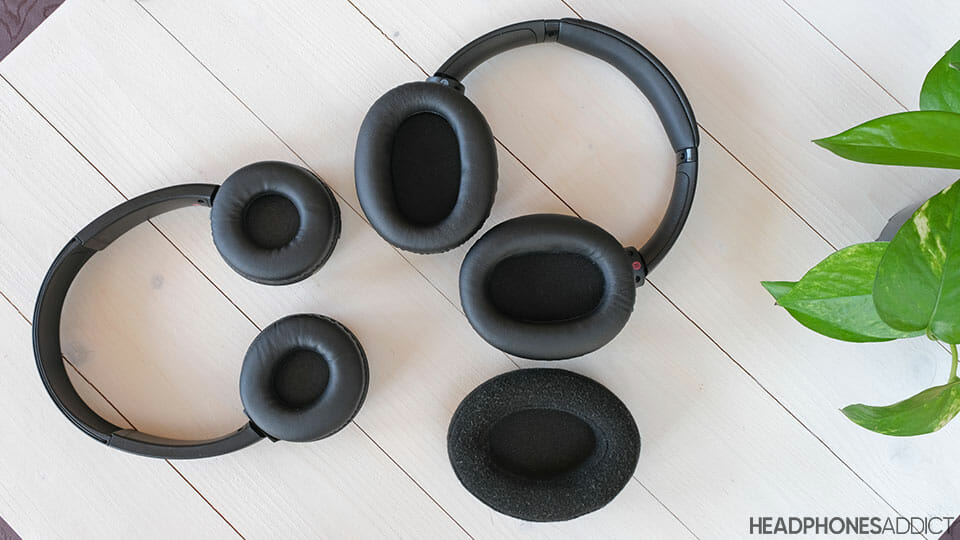
The audio quality doesn’t impress, and they lack support for an app.
Also, there’s the price. Usually, Sony WH-CH710N sell for around $180, which is simply too high.
On the other hand, if you can get them for around $100 ($98 at the moment), they might be worth checking out.
Still, the competition is fierce. Even the cheaper Anker Soundcore Life Q30 offer a more rounded performance and better sound quality.
How do Sony WH-CH710N compare to the competition?
- They have a much better battery life with and without the ANC.
- Their lightweight construction and big over-ear earpads make them comfier than the competition.
- Active noise cancelling performance is slightly better overall, with less hissing noise in the background.
- The sound quality is very mediocre, especially for the price.
- While the build quality is good, they lack an additional carrying case.
Sony WH-CH710N Alternatives
Anker Soundcore Life Q30
At a smaller price point, you get better sound quality (after EQ), a companion app support, a hard-shell carrying case, and a slightly better battery life.
On the other hand, they aren’t as comfy nor lightweight, and the active noise-canceling isn’t as strong.
Anker Soundcore Life Q35
Design and battery-wise, they’re identical to the Life Q30 but with a more luxurious packaging and premium-looking carrying case.
The sound is slightly worse than Q30 but overall better than the WH-CH710N. However, they do support the LDAC codec.
On the other hand, active noise cancellation isn’t as good as Sony’s.
OneOdio A30
Another alternative for a very reasonable price with better, more dynamic sound. Albeit it’s slightly sibilant.
The best thing about these headphones is their excellent call quality, which wipes away even premium models.
Otherwise, the A30’s aren’t as comfortable, nor do they offer better ANC. You get an 18-hour long battery life (with active noise cancelling), which is also lower in comparison.
What’s in the Box?
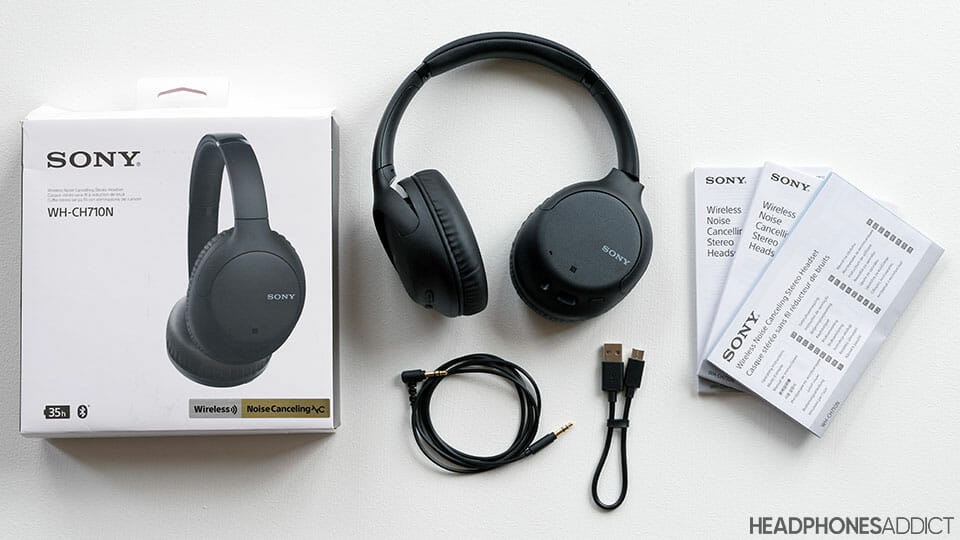
- Sony WH-CH710N wireless headphones
- USB-C cable
- User manual
Specifications
| Type: | Over-ear |
| Connection: | Bluetooth 5.0 |
| Back design: | Closed-back |
| Drivers: | 30mm dynamic |
| Frequency range: | 20-20.000Hz |
| Impedance: | 72 Ohm (headphones ON) & 33 Ohm (headphones off) |
| Weight: | 7.86 oz (223 g) |
| Mic & Controls: | Yes |
| Water resistance: | None |
| Battery life: | 35h (ANC off) |
| Charging time: | Quick charge – USB-C |
| Active noise cancelling: | Yes |
| Bluetooth codecs: | SBC, AAC |
| Wireless range: | 60ft+ (18.2m+) |
| Microphone: | Yes |

From a childhood fascination with sound, Peter’s passion has evolved into a relentless pursuit of the finest headphones. He’s an audio expert with over 5 years of experience in testing both audiophile and consumer-grade headphones. Quote: “After many years, I can confidently tell which headphones are good and which are terrible.” Find his honest opinion in his reviews.







